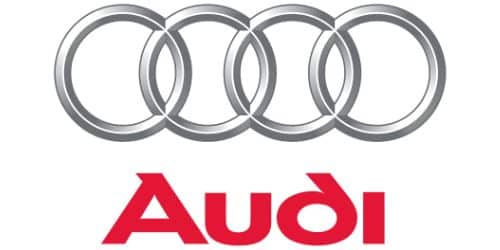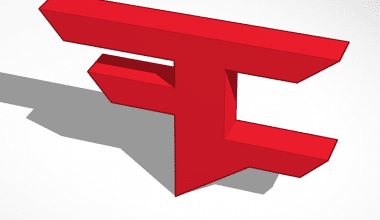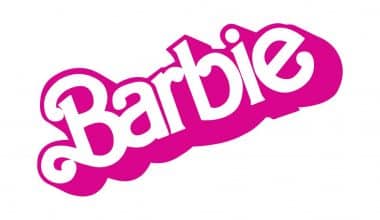Audi is a well-known German automobile manufacturer that was founded in 1909 and became a subsidiary of Auto Union GmbH in 1932. The company, which Volkswagen AG owns, is present on all continents and operates 13 manufacturing plants worldwide. This article will discuss in detail the meaning and history of the Audi logo.
What Does Audi Mean?
Audi derives its name from the surname of its founder. It’s a Latin translation of a man’s name, August Horch. According to Yeovil Audi, it’s the German word for “listen!” On the other hand, Audi is the result of a merger of several other companies that formed the Auto Union.
The German word “Horch” translates to “Audi” in Latin. The four rings of the Audi logo each represent one of the four automobile companies that merged to form Audi’s predecessor company, Auto Union.
The merger of Horch, DKW, and Wanderer formed Audi Automobilewerke. This occurred in 1932. Audi’s headquarters are now in Ingolstadt, Germany. After several shifts following the end of World War II, “Auto Union GmbH was established in Ingolstadt on September 3rd, 1949,” as stated by Yeovil Audi.
The automaker contributes several models to what we consider to be the German luxury car segment. In response to the surge in popularity, there is now a plethora of Audi SUVs on the market. Today’s Audi models are likely descended from centuries of AWD performance cars.
What is Audi Quattro?
The Audi Quattro is one of the company’s most well-known flagship vehicles. The Audi Quattro debuted at the Geneva Motor Show in 1980. According to Yeovil Audi, this AWD sports coupe was the first of its kind. It helped to shape Audi’s lineup into what it is today.
The vehicle’s global success had a massive impact on the entire industry. Even today, more and more vehicles are being released with available AWD systems. This performance car with all-wheel drive is one of Audi’s most significant contributions to the auto industry.
On April 24, 1958, Daimler-Benz AG purchased Auto Union GmbH. However, this ownership lasted only until 1965. During that time, Auto Union was a wholly owned subsidiary of the Stuttgart-based Daimler Group.
Volkswagenwerk AG eventually stepped in. Volkswagen purchased the majority of Auto Union shares in December 1964. By the end of the 1966 fiscal year, Audi was a wholly owned subsidiary of the Volkswagen auto group.
Then, in 1969, Auto Union and NSU Moterenwerke, both Volkswagen subsidiaries, merged to form Audi NSU Auto Union AG. Volkswagen still owns this subsidiary today. And, yes, it is a German automobile manufacturer. Volkswagen and Audi both have their headquarters in Germany. They are both German luxury car manufacturers, with offices worldwide promoting the sale of popular models such as the Aurelia.
Audi AG’s history is long and full of important events. It has a long history of producing automobiles and engines, dating back to the nineteenth century.
Audi And August Horch
In 1899, August Horch started the automotive firm Horch & Cie. Motorwgenwerke, which would later become Audi. After ten years, he established Audi Automobilwerke, Zwickau’s second car manufacturing company.
Four Brands, Four Rings
In 1932, Audi, DKW, Horch, and Wanderer, four companies based in the German region of Sajonia, merged to form Auto Union AG, the country’s second-largest automaker.
Audi’s Four Rings
In developing a comprehensive platform strategy, the Audi brand’s guiding principle was to maximize synergies ( DKW front-wheel-drive, Wanderer engines, and Horch body parts were part of the Audi model range since 1933)
DKW Four Rings
DKW products were well-known for their superior functionality, dependability, and cost-effectiveness. The DKW brand provided Auto Union with models that were sold in large quantities, so it was critical to the new group’s success.
Horch Four Rings
The Horch factory in Zwickau never strayed far from the company’s founding principle: to build exceptional quality powerful cars. As a result, Auto Union sold Horch cars to the upper echelons of the market.
Wanderer’s Four Rings
When Auto Union AG was founded, the Wanderer Cars division was created to produce mid-range vehicles. More emphasis was placed in the following years on the brand’s sporting and advanced aspects.
A new beginning in Ingolstadt 1949: What was originally an Auto Union spare parts deposit in the ancient fortified city of Ingolstadt became the central building of Auto Union GmbH. This new company continues the automotive tradition associated with the four-ring emblem.
The Brand’s Rebirth
The new DKW model F 102 is introduced to the market in 1965. It was the brand’s first car with a four-stroke engine since the war and the start of a new era. As a result, the brand deserved a new name: Audi, a name steeped in tradition, had been reborn.
Fusion of NSU
Volkswagenwerk AG purchased the Neckarsulm-based fusion of Auto Union GmbH and NSU Motorenwerke AG in 1969. Audi NSU Auto Union AG was the name given to the new company, which had its registered office in Neckarsulm.
The wide range of Audi NSU, which included a wide range of engines and driving concepts, necessitated the creation of a new advertising slogan in 1971. Since then, the slogan has effectively communicated the company’s goals: “At the forefront of technology.”
1909(Pre-launch)
Audi’s first logo, introduced in 1909, was a pre-launch version consisting of a diagonally located cursive inscription in an oval outline. The logo was created in a dark gray color that appeared professional and strict.
The badge, designed in 1909, was only used by Audi for a few months before being replaced by a modernized version the following year. The first attempt of this period resembled a large number “1” emerging from a sphere, which was half-hidden behind the black triangle pointing down. The wordmark “Audi” was written in white narrowed cursive on a black background.
1909 – 1932
Later that year, an official badge was created, consisting of a solid black triangle pointing down with the number one sign above it and a white cursive wordmark with thick smooth lines running along the upper line of the geometric figure. This logo remained with the automaker until the formation of the Auto Union in 1932.
1932 – 1949
The first Auto Inion logo had four blue rings. In each ring, the blue emblem of one of the four brands was drawn. Audi, DKW, Horch, and Wanderer Automobile were among the manufacturers.
The true Audi story began in 1932 when four companies merged to form Auto Union. And the iconic four-ring logo that everyone knows today is a celebration of the brand’s history and roots — a union of four brands represented graphically by four connected rings.
1949 – 1969
The four-rings logo was simplified in 1949. The emblems of the brands were removed from the badge and replaced with a thin horizontal rectangle that crossed the rings in the middle and bore the capitalized sans-serif inscription.
Audi debuted a new logo in 1969. The black rectangle badge was stretched horizontally and featured white Audi script on the left and white sans-serif uppercase “NSU” on the right.
1969 – 1995 (Badge Logo)
In 1969, Auto Unions becomes Audi, and the rectangular banner is removed from the logo. As a symbol of strength and confidence, the emblem is now composed of only four thick blue rings chained together.
During the same time period, there was also a logotype — bold white lettering in a custom sans-serif with the rounded shape of the “D” placed inside the solid black oval, which was horizontally located.
1978 – 1995
In 1978, the oval was colored red and given a thin double white and red outline, which improved contrast and made the emblem more distinct and bright.
In 1995, two emblems merged into one. The logo, created that year, was made up of a silver three-dimensional ring symbol with extra-bold red lettering in the same custom typeface beneath it.
The rings’ thin and delicate contours brilliantly balance the massive wordmark, adding elegance and exclusivity to the overall image.
2009 – 2016
The logo was refined in 2009, with the glossy rings and the nameplate becoming smaller. The lettering typeface was changed to a more traditional sans-serif with slightly extended shapes. It was now positioned on the left bottom corner of the logo, making the four-rings emblem the focal point of the design.
The logo is simplified in 2016. All three-dimensional effects have been removed, and the iconic symbol is now rendered solid black with no additional lettering. Four rings now have more space in the overlapping areas and appear much more powerful and stylish.
The Significance of the Audi Logo
The original significance of Audi rings had more to do with politics than actual design. Apart from Audi, the policy of combining four major automotive manufacturers was not called a merger because it could offend the owners of three other companies. For a time, the joint venture went by the generic and neutral name Auto Union.
Later, particularly after returning to the classic logo design in 1985, the symbolism was formulated as “harmonious interaction for the benefit of the consumer.” Later, this was extended to the work of the company’s divisions and subsidiaries.
Iconic Symbol
The modern Audi logo is well known worldwide, and its influence is comparable to that of Mercedes and BMW, being in the top three of the German automotive market and in the top ten of the most successful European automakers.
The logo looks great in any setting, and its shape works particularly well with the horizontal lines of the radiator grille.
Audi Logo Font
Although Audi is now a global brand, it has stuck with the typeface design of its original logo. The inscription “Audi” changed slightly, but the font remained largely unchanged until 2009. To further emphasize its note-like appearance, it featured a notch on the uppercase letter “A,” a simplified “U,” and a unique “d.”
It’s also interesting to know that August Jorge came up with the modern look of the logo as part of the process of bringing together four car companies under the Audi brand. One of these companies was a long-gone independent Horche enterprise (now owned by other owners) founded by Augustus Jorge.
In 2009, however, the company decided to standardize the logo, simplifying the font so that it no longer had such glaring individual features. Furthermore, the font element was moved from the center to the left, beneath the Audi logo.
Audi Logo Color
The logo hasn’t changed much in terms of its color scheme. Audi used classic black color for the logo to adhere to classical forms. At the same time, the white font stood out against the black background.
However, the famous Audi rings turned silvery in 1985, and the font color was changed to red. As a result, the brand highlighted a new chapter in its history (a return to the classic form of the logo) and a technologically innovative policy. The font color was changed from scarlet to cherry in the 2009 version.
Why Does the Audi Logo Have 4 Rings?
Why does the Audi logo have 4 rings? DKW, Horsch, Wanderer, and Audi are the companies. Following the merger, the Auto Union was formed, and the company was later renamed Audi.
Following the 2016 redesign, Audi began writing its Ted logotype in a more straightforward and stricter typeface than it had used for most of its history. The new inscription in a title case is written in a bold and modern yet minimalist sans-serif typeface similar to Alumni Std Extended Bold and Corbet Wide Extra Bold Wide, with some exquisite lettering lines.
The four rings of the company’s iconic emblem are drawn in black, and the logotype, which is both delicate and robust, is drawn in red; the rest of the company’s visual identity is executed in orange, one of the most traditional and powerful color palettes.
The combination of these colors represents confidence, expertise, and a sense of professionalism while demonstrating the company’s value of high-quality design and style.
What Does the Audi Emblem Represent?
The four rings on the Audi emblem represent the 1934 merger of four companies, Audi, Horch, DKW, and Wanderer, which resulted in the formation of the Auto Union AG. Initially, the Audi logo was only used on racing cars, but simple cars were manufactured under each company’s brand and decorated with their emblems.
What Does the Audi Logo Stand For?
The current Audi automaking brand logo, consisting of four intertwined rings, commemorates the company’s history. This badge was introduced in 1934, with the formation of the Auto Union AG by Audi, Horch, Wanderer, and DKW, the largest automobile merger in German history. Each of the four rings was adorned with the logo of one of the four companies.
Why Is the Audi Logo Four Rings?
The Audi logo is made up of four rings, and it was first used in the early 1930s, following the formation of Auto Union AG, a German automaker group formed through the merger of four large brands. Each of the four rings represents one of the Auto Union’s member companies.
What Do the Four Rings in Audi’s Logo Represent?
The iconic Audi badge represents convenience and consolidation. The four rings on the logo symbolize unity and cohesion. It was a brilliant idea to graphically depict the merger of the four brands that had remained with Audi for decades.
Is Audi a German or an English Company?
AUDI AG is a German automaker that manufactures vehicles under the Audi brand. It is a subsidiary of the Volkswagen Group. The name Audi is derived from a Latin translation of the founder’s surname, August Horch, the German word for “listen!” Audi’s headquarters are located in Ingolstadt, Germany.
Is Audi a Luxury Brand?
There is no single definition of luxury, but Audi and Lexus have done their best to define it. When defining luxury, it’s helpful to think about extra features, hybrid options, safety-first technology, elegant plush interiors, plenty of foot space, maximum cargo space, powerful torque, smooth suspension, and a streamlined appearance. These are all strengths of newer Lexus and Audi models, so it should be no surprise that Audi belongs to the luxury brand category.
Audi makes high-quality, reliable, and sporty luxury cars and SUVs. Thousands of people spend their money yearly on one of these German luxury cars or an Audi SUV.
Who Makes Audi Today?
Although Audi is now a separate company, the four rings in its logo are a tribute to the four German companies that worked together to pioneer the automobile industry.
Where Are Audi Vehicles Made?
Audi is a member of the Volkswagen Group, which also includes Bentley, Bugatti, Lamborghini, and Porsche. This has allowed Audi to stay true to its roots while also creating luxurious, high-performance automobiles. Audi’s two German factories serve as the company’s nerve center, but they also have facilities in places like
- Germany
- Ingolstadt.
- Neckarsulm
- Jakarta
- Bratislava
- India
- Aurangabad
- Belgium
- Changchun
- Slovakia
- BruxellesChina
- Gyr (Hungary)
- Martorell
- Indonesia
- Spain
- Mexico City
- San José Chiapa
What Is Audi’s Brand Personality?
Audi has revised its brand strategy, positioning itself as the leader in future mobility solutions. German trademark Audi has unveiled its new brand identity, which will redefine the term “Vorsprung” (head start or advance in English). According to the company, the brand will be reoriented with people and their values and needs at the center of the redefined brand strategy.
What Is the New Brand Identity?
Audi has coined a new slogan, “Future is an Attitude,” to emphasize the transition to sustainable and digital premium mobility. This new logo will be the centerpiece of the brand’s first-ever global campaign, which aims to combine its marketing efforts around the world while taking into account the different needs of each country and culture. Despite this, Audi’s long-standing German slogan “Vorsprung Durch Technik,” which translates to “progress through technology,” will continue to be used. Henrik Wenders, Senior Vice President, Audi, stated that the company is redefining its strategy and giving it a “new contemporary definition to Vorsprung,” preparing it for the future of a new automotive era.
What Will Be the Key to Audi’s Future Success?
Reworking the strategy will improve people’s lifestyles, he says. The company’s goal is to become the “future of premium mobility and create fascinating new products.” The German automaker intends to position itself as a leader in “an electric, digitalized, and emotional future” with this new brand campaign. Audi recently introduced its first electric vehicles, the e-Tron, and e-Tron Sportback. The SUVs are propelled by two electric motors on each axle, which is powered by a 95kWh battery pack. The motors produce 360PS of power and 561Nm of peak torque when combined. Its instant torque propels it past 100 kmph in 6.6 seconds. Its battery pack is claimed to have a range of over 400 kilometers. Audi has upcoming EVs such as the Audi AI: ME and Audi Q4 Sportback e-Tron concept in addition to its current line of electric vehicles.
The new EVs will represent Audi’s innovative brand power. According to the company’s press release, the new marketing campaign will be implemented across all channels and platforms, from television to digital. Tesla is a competitor. The brand has already launched its new website, ‘progress.audi,’ which contains all of the new campaign’s content. It also provides users with accounts of background stories about the company.
This new brand strategy pits the German automaker against American manufacturer Tesla as a leader in future mobility solutions. Although Audi has a much more significant global presence, California-based Tesla Inc. was recently named the world’s most valuable automaker.
What Is the Tagline of Audi?
Advertising Slogans and Taglines(or mottos) of Audi Includes
- Vorsprung durch Technik.
- Never Follow.
- Keeping ahead through technology.
- Everyone dreams of an Audi.
- Audi India: Everyone dreams of an Audi.
- Audi A3: Luxury without compromise.
- The Audi A4: A sedan that makes a lasting impression.
- The Audi A6: The better of the best.
- The Audi A8: The advanced state of mind.
- The Audi R8: Born of powerful ideas.
- The Audi Q5: True greatness.
- Audi S: line cars
- Audu S: line More horses, fewer seconds.
- Audi with Sideguard system
- Advertising slogan: Protection on all sides.
- Audi A6 model: Following your own rules. Audi A6.
- Audi Quattro cars: It’s a miracle, but we’ve made it.
What Are the Three Audi Brand Core Values?
Audi’s core values are appreciation, openness, responsibility, and integrity.
These values demonstrate how the Audi Group values collaboration, embraces new challenges, and embraces diversity. Furthermore, Audi has set the goal of becoming a responsible company for the environment and society. Errors should not be hidden but instead addressed. This issue affects us all, especially in light of the diesel crisis. It is also the only way to improve and progress constantly.
Conclusion
Lexus and Audi offer a full range of luxury vehicles, so drivers interested in a used or new Lexus may want to look at a luxury dealership for both used Audi and Lexus models to broaden their options. You can’t know what you’re missing out on until you try a luxury brand.
Related Articles
- GERMAN CAR BRANDS: The Most Reliable Brands in 2023 (Updated)
- EUROPEAN CAR BRANDS: Top 19+ Luxury European Car Brands in the USA
- WEDDING RING INSURANCE: Should You Insure Your Wedding Ring?
- 21+ Best AFFORDABLE JEWELRY BRANDS 2023, Ranked & Updated!!!)
- The Most POPULAR JEWELRY BRANDS in 2023: 30+ Picks






